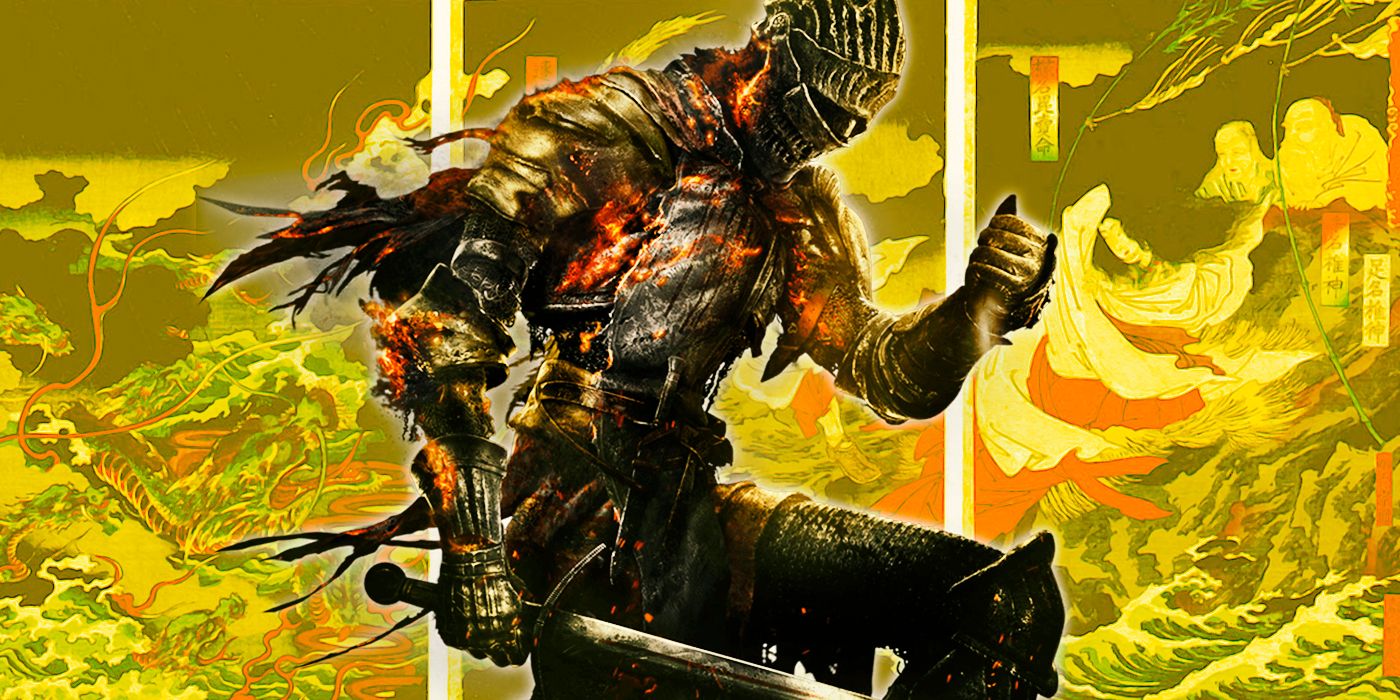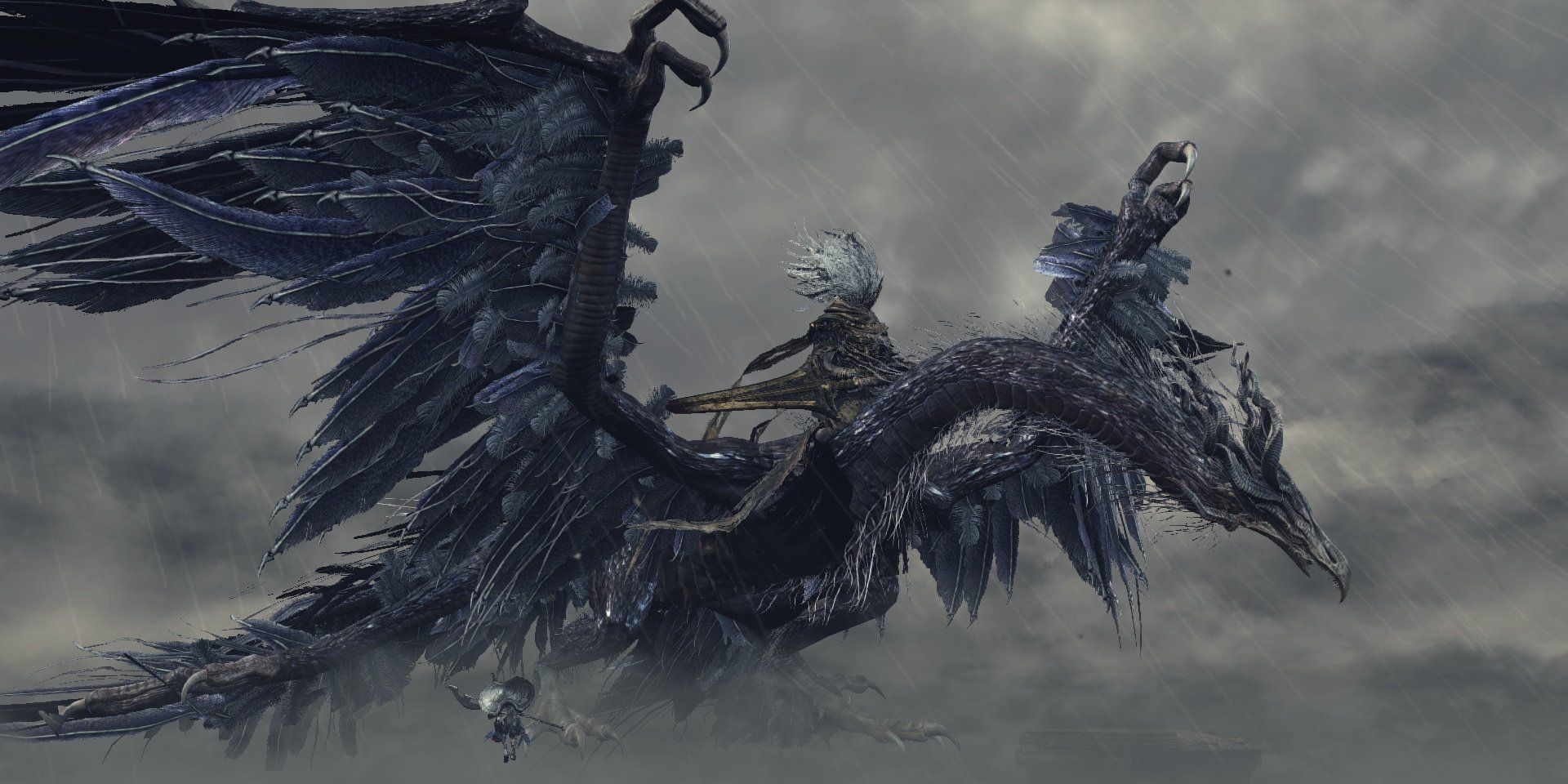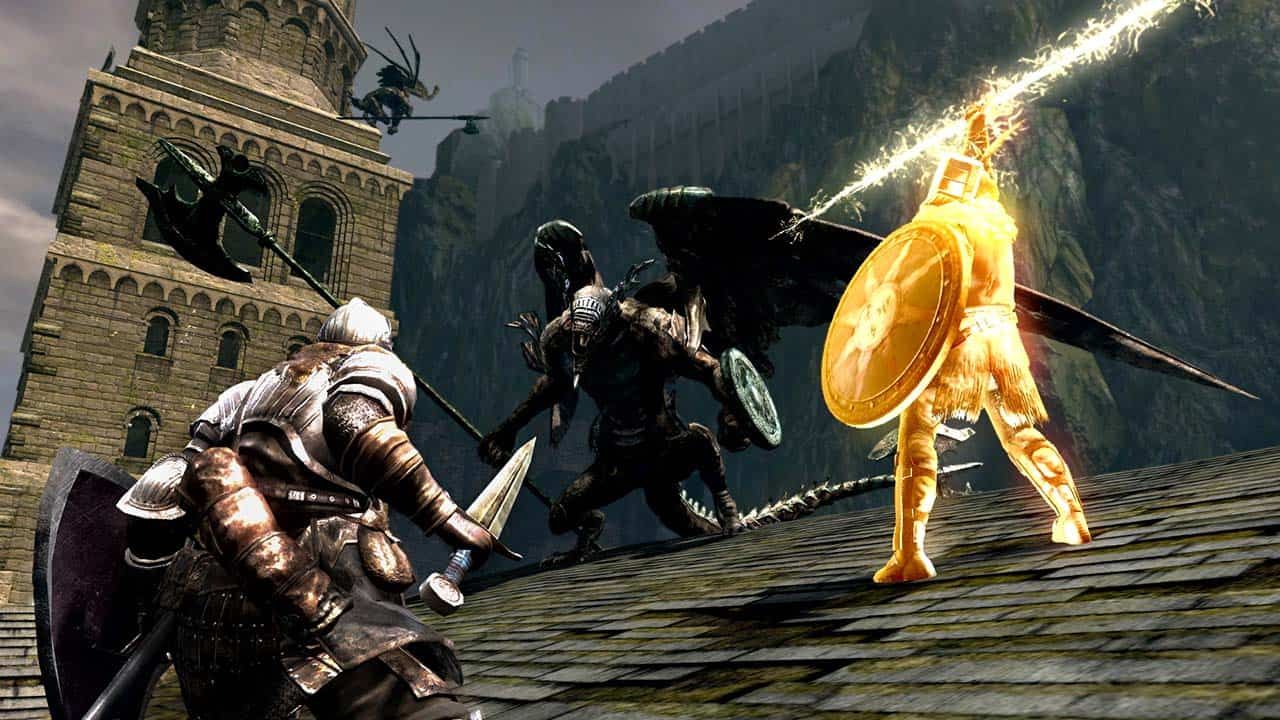The Dark Souls series is known not only for its infamously challenging difficulty but also for its strange fantasy world that draws inspiration from Western mythology and classic fantasy novels. The constantly changing world of Dark Souls is inhabited by all manner of undead entities, eldritch abominations and more, all suffering under the absence or corruption of the setting's various gods.
While some of Dark Souls' enemies are a common sight in western fantasy such as Lord of the Rings, it is Dark Souls' Japanese influences that make the world stand out among various other classical medieval fantasy games. Including the various references to another dark fantasy manga, Berserk, Dark Souls takes a large amount of influence from Japanese mythology. Alongside the obvious references to the sun goddess Amaterasu with the sun and fire being major symbols, Dark Souls' most unique game mechanic--cutting off the tail of an enemy and turning it into a weapon--comes from the classical myth of the eight-headed dragon Yamata-no-Orochi.
The tale of Yamata-no-Orochi is more the tale of the Shinto god of storms, Susano-o-no-Mikoto, the younger brother of the sun goddess Amaterasu. After being thrown out of heaven, Susano-o encounters elderly gods who lament that they must sacrifice their eighth and final daughter, Princess Kushinada, to be eaten by the eight-headed dragon, Yamata-no-Orochi. Susano-o offers to slay the dragon in exchange for Kushinada's hand in marriage, hiding her by transforming her into a comb to hide in his hair. Susano-o then proceeds to trick the monster into drinking copious amounts of sake with the help of Kushinada's parents.
Once Yamata-no-Orochi dips his eight heads into eight sake vats, he falls asleep in a drunken stupor. Susano-o then slaughters the beast to the point of coloring the river red, until he finds that his sword shatters against the dragon's fourth tail. Upon examining it, the fourth tail is not a tail--it is in fact the legendary katana known as the Kusanagi-no-Tsurugi. Susano-o takes the sword and hands it back to his sister Amaterasu in order to beg his forgiveness back into the heavens.
To Western players, the idea of cutting off an enemy's tail to receive a weapon seems very strange, but players familiar with Japanese myth will completely understand the reference to Yamata-no-Orochi. Almost all weapons that are found by cutting off a tail in Dark Souls end up being extremely powerful in the hands of even the most inexperienced players. Infamously, the tail of the Red Drake in the first Dark Souls game can be cheesed with a bow and arrow to drop the Drake Sword, a blade that can carry the player through almost the entire first half of the game.
The slaying of dragons is a common theme in many forms of folklore, with the entire origins of the Dark Souls lore hinging on the ancient war between the gods and the dragons. Susano-o, god of the storms, has also clearly influenced a major figure in the Dark Souls canon: Gwyn's first-born son, who has been exiled from his home and the annals of history. Heavily implied to be the Nameless King in Dark Souls 3, Gwyn's first-born is also known as the "King of the Storms" and famed for his dragon-slaying skills (even training Ornstein). But, much like Susano-o, the Nameless King is a multifaceted figure who was exiled from his home after siding with his enemies.



